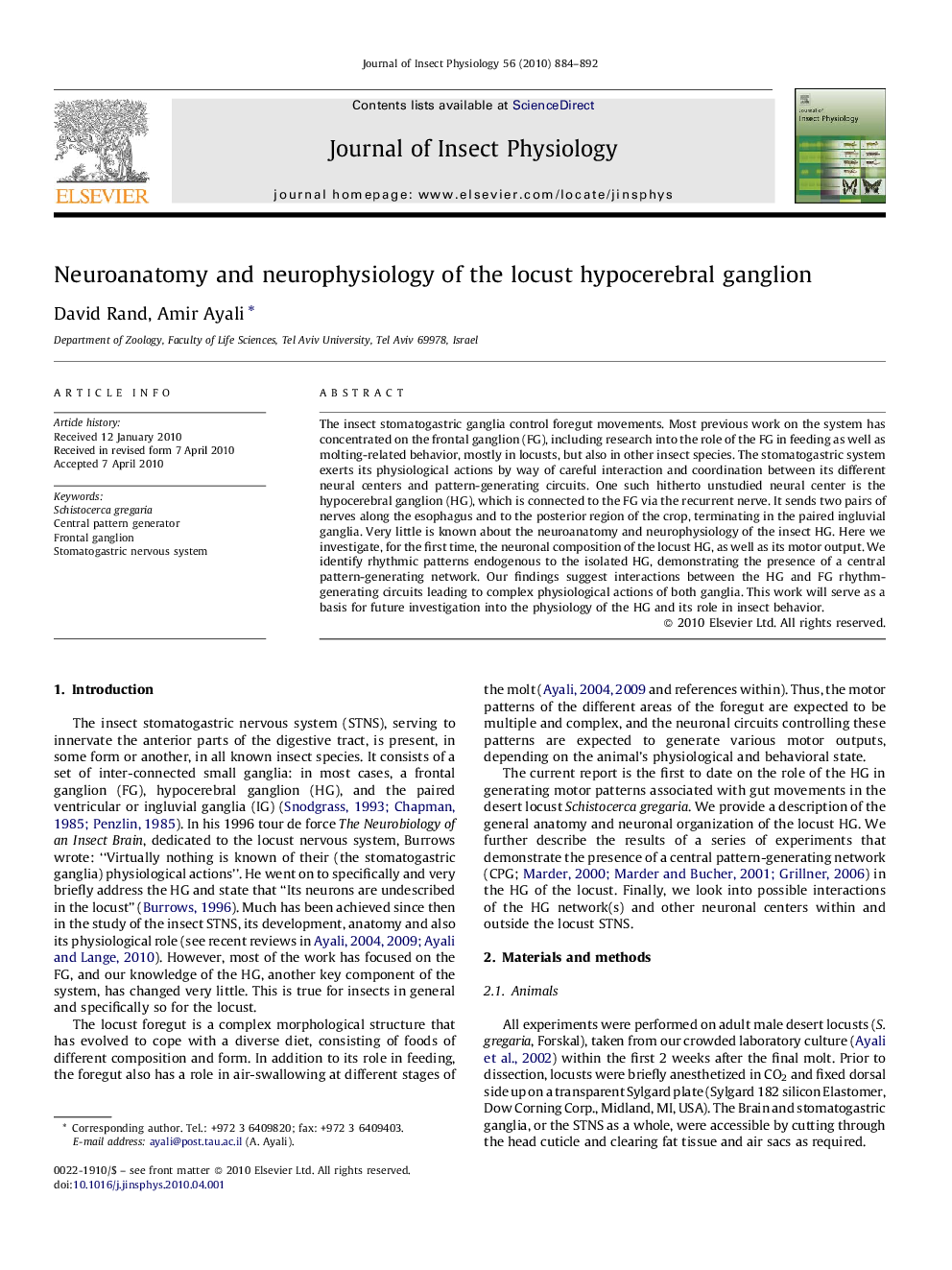| Article ID | Journal | Published Year | Pages | File Type |
|---|---|---|---|---|
| 2840706 | Journal of Insect Physiology | 2010 | 9 Pages |
The insect stomatogastric ganglia control foregut movements. Most previous work on the system has concentrated on the frontal ganglion (FG), including research into the role of the FG in feeding as well as molting-related behavior, mostly in locusts, but also in other insect species. The stomatogastric system exerts its physiological actions by way of careful interaction and coordination between its different neural centers and pattern-generating circuits. One such hitherto unstudied neural center is the hypocerebral ganglion (HG), which is connected to the FG via the recurrent nerve. It sends two pairs of nerves along the esophagus and to the posterior region of the crop, terminating in the paired ingluvial ganglia. Very little is known about the neuroanatomy and neurophysiology of the insect HG. Here we investigate, for the first time, the neuronal composition of the locust HG, as well as its motor output. We identify rhythmic patterns endogenous to the isolated HG, demonstrating the presence of a central pattern-generating network. Our findings suggest interactions between the HG and FG rhythm-generating circuits leading to complex physiological actions of both ganglia. This work will serve as a basis for future investigation into the physiology of the HG and its role in insect behavior.
